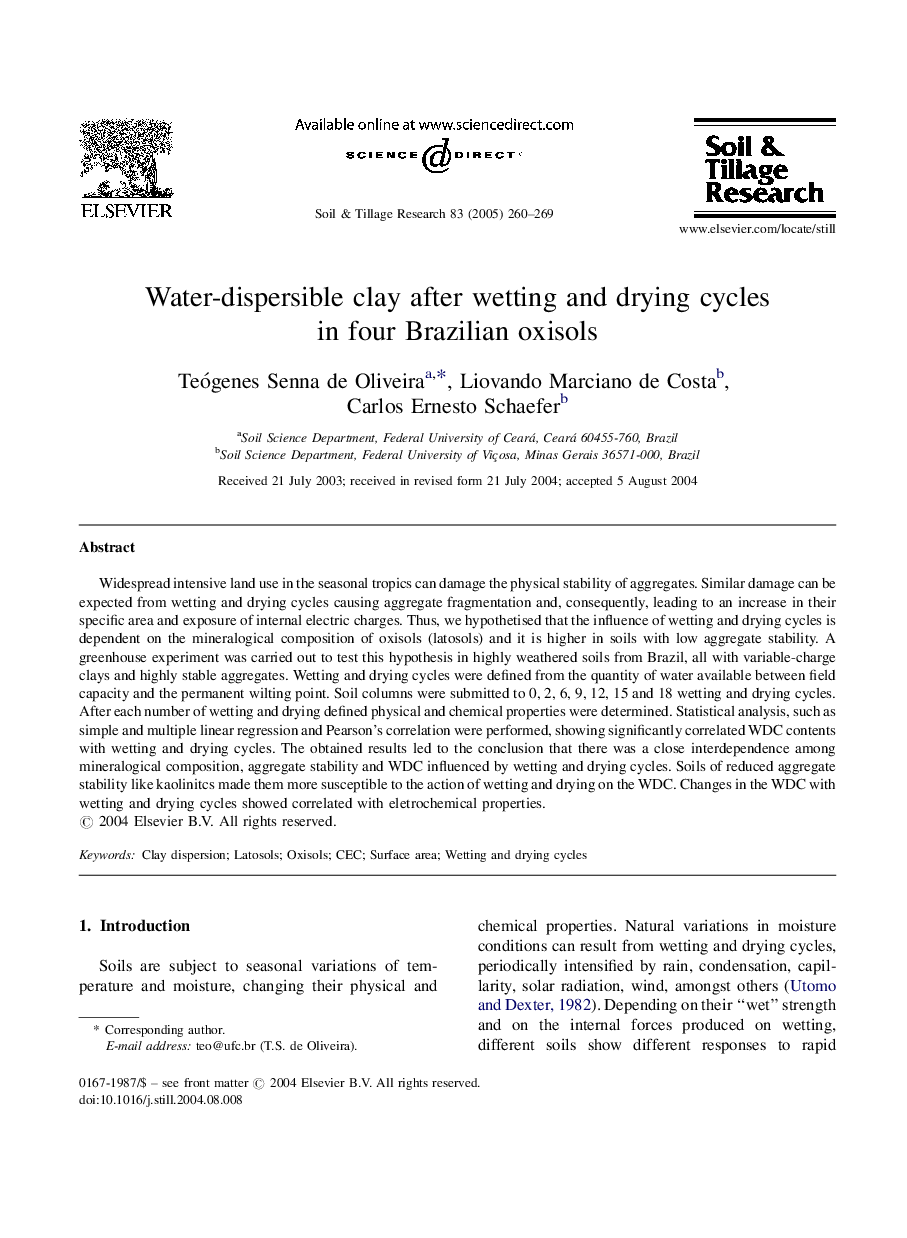| Article ID | Journal | Published Year | Pages | File Type |
|---|---|---|---|---|
| 10295315 | Soil and Tillage Research | 2005 | 10 Pages |
Abstract
Widespread intensive land use in the seasonal tropics can damage the physical stability of aggregates. Similar damage can be expected from wetting and drying cycles causing aggregate fragmentation and, consequently, leading to an increase in their specific area and exposure of internal electric charges. Thus, we hypothetised that the influence of wetting and drying cycles is dependent on the mineralogical composition of oxisols (latosols) and it is higher in soils with low aggregate stability. A greenhouse experiment was carried out to test this hypothesis in highly weathered soils from Brazil, all with variable-charge clays and highly stable aggregates. Wetting and drying cycles were defined from the quantity of water available between field capacity and the permanent wilting point. Soil columns were submitted to 0, 2, 6, 9, 12, 15 and 18 wetting and drying cycles. After each number of wetting and drying defined physical and chemical properties were determined. Statistical analysis, such as simple and multiple linear regression and Pearson's correlation were performed, showing significantly correlated WDC contents with wetting and drying cycles. The obtained results led to the conclusion that there was a close interdependence among mineralogical composition, aggregate stability and WDC influenced by wetting and drying cycles. Soils of reduced aggregate stability like kaolinitcs made them more susceptible to the action of wetting and drying on the WDC. Changes in the WDC with wetting and drying cycles showed correlated with eletrochemical properties.
Related Topics
Physical Sciences and Engineering
Energy
Renewable Energy, Sustainability and the Environment
Authors
Teógenes Senna de Oliveira, Liovando Marciano de Costa, Carlos Ernesto Schaefer,
